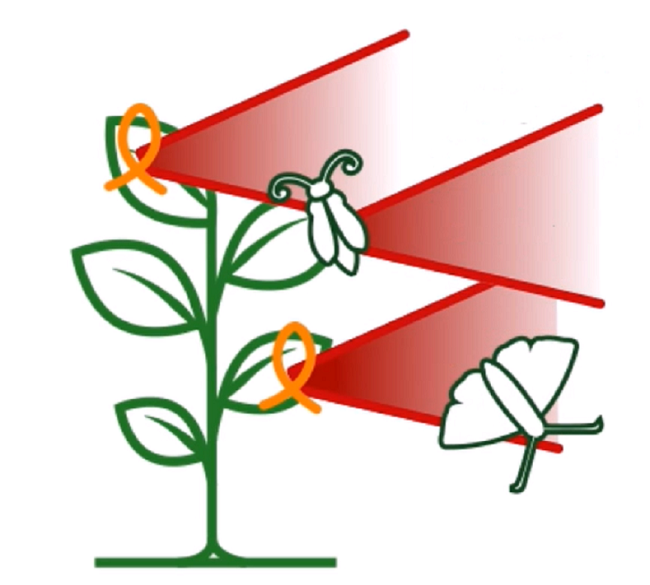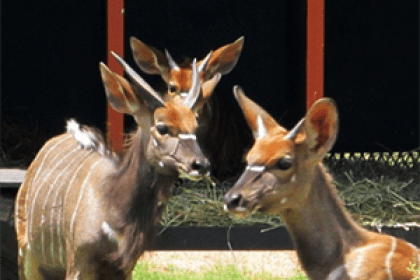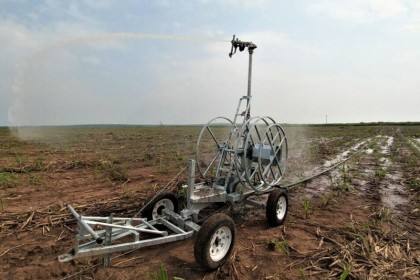
Understanding Semiochemicals...
With the growing dissatisfaction towards conventional pest control methods, a popular alternative is to modify insect behaviour and manipulate pest populations by means of molecular approaches. Semiochemicals are signalling, chemical molecules targeting individuals of the same species (intraspecific) or different species (interspecific). These signals are emitted by one individual to elicit a response in another, thus resulting in a change in behaviour. Semiochemical signals are divided into two broad classes, namely Pheromones and Allelochemicals.
What are Pheromones?
Insect pheromones are intraspecific signals and are used to prompt mating behaviour. These olfactory cues are highly species specific and are produced by female moths to trigger a social response in the male species, with the aim of avoiding competition and increasing pest populations by mating. With the phytosanitary and regulatory restrictions limiting use of most synthetic insecticides, mating disruption has become one of the most widely used methods in integrated pest management (IPM) programs globally. These species-specific female pheromones are synthetically produced with the aim or reducing pest abundance by disrupting the normal mating process. The male moth will fly upward into the plume to locate the source of the pheromone. When the orchards are saturated with the formulated pheromone, it results in more point sources of the pheromone dispensers, compared to that of the feral female (Figure 1)
Figure 1: Pheromone dispensers act as false source disorientating males and making him unable to detect the plume of calling female.
The diffused formulated plume will disrupt the normal insect pheromone channel causing the male pest to become disorientated and unable to find his female counterpart, thus interrupting normal mating behaviour and reducing pest abundance.
Allelochemicals
Allelochemically-mediated communication can be divided into four categories, namely allomones, synomones, apneumones, and the most well-known group being the kairomones (El-Shafie & Romeno, 2017).
What are Allomones?
Allomones are chemical counter measures that are used as a defence mechanism against potential
predators. The release of these chemical markers are beneficial to the sender but not the receiver.
Synomone signals are mutually beneficial to both the producer and the receiver, and are primarily
responsible for attracting pollinators. Apneumone chemical markers are produced by non-living organisms which are beneficial to the receiving species but not favourable to any other organism in the non-living matter (El-Shafie & Romeno, 2017). In most cases kairomones cause a behavioural or physiological response which benefits the recipient of the interspecific communication, whist being disadvantageous to the emitter/producer. Predators, parasites and parasitoids use kairomones to locate food and/or oviposition sites (Kost, 2008). In some cases, the prey can also chemically detect the predator and undergo behavioural and morphological changes (Gross, 2009). By enhancing the effectiveness of natural enemies, kairomones have been used in pest management efforts for decades, to reduce economic losses and negative effects caused by pest damage. Semiochemicals have been used in pest management for decades, however its importance is gradually increasing, due to its ability to repel pests, attract natural enemies, influence the behaviour of insects
and drastically reduce pest abundance, without the concern of pesticide residues.
RESHMA GAYARAM
Product Portfolio Manager: Semiochemicals
References
El-Shafie, F., & Romeno, J. (2017). Semiochemicals and Their Potential Use in Pest Management.
Retrieved from http://dx.doi.org/10.5772/66463
Gross, E. M. (2009). Allelochemical Reactions.Encyclopedia of Inland Waters.
Kost, C. (2008). Chemical Communication.
Encyclopedia of Ecology.
For other agricultural products and services, click here.












